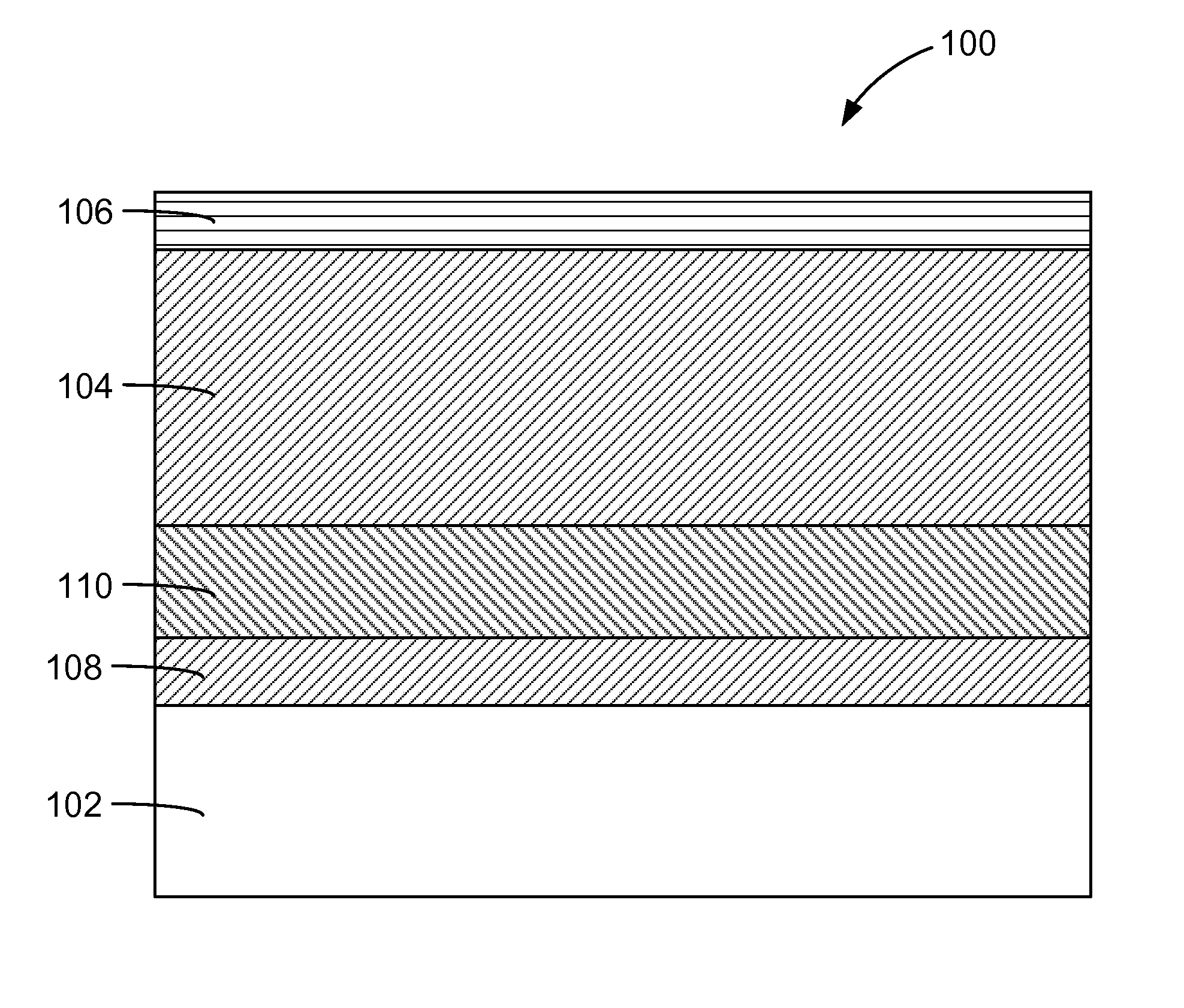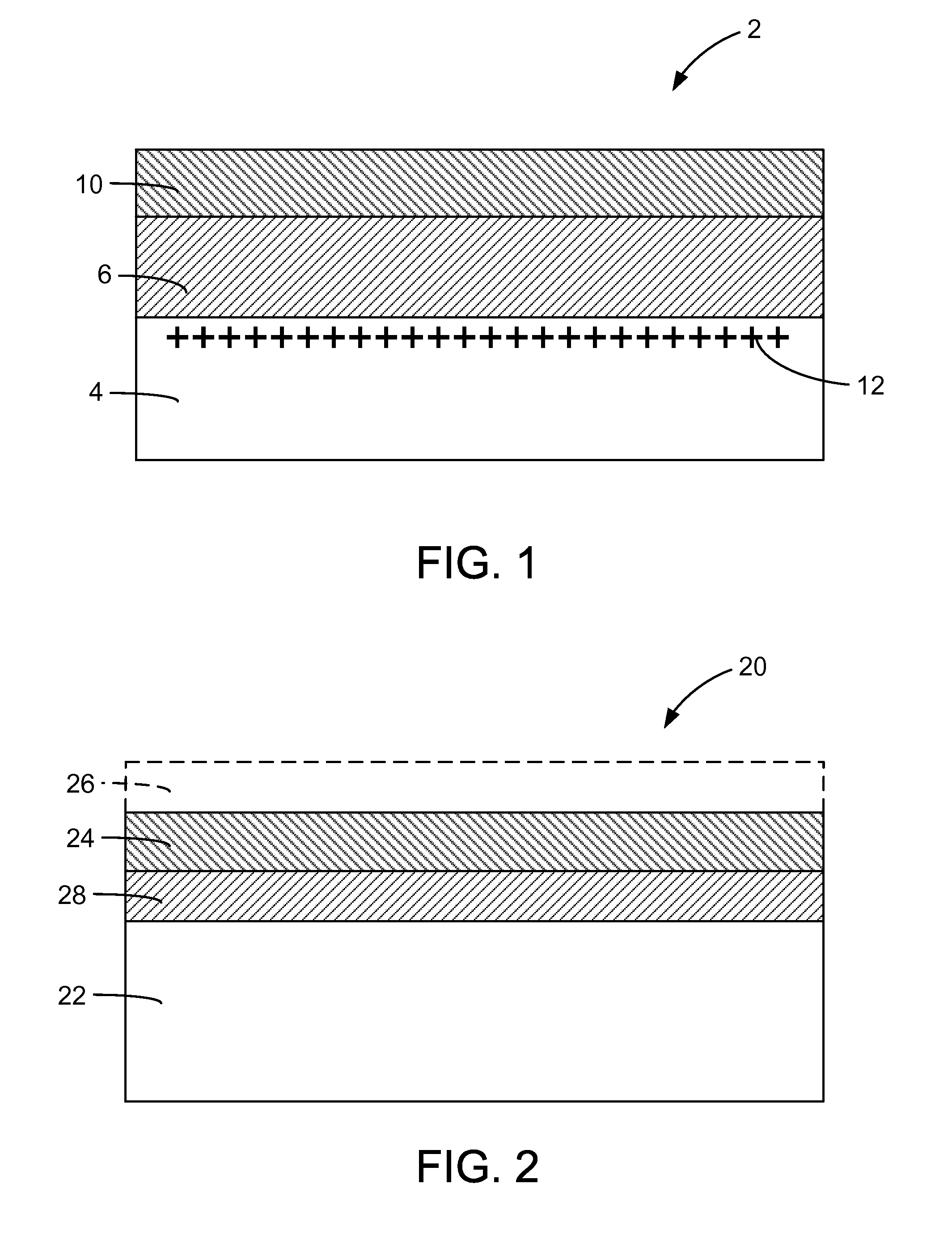Method of manufacturing high resistivity silicon-on-insulator substrate
- Summary
- Abstract
- Description
- Claims
- Application Information
AI Technical Summary
Benefits of technology
Problems solved by technology
Method used
Image
Examples
example 1
Silicon-on-Insulator Structure comprising Carbon-Doped Amorphous Silicon Charge Trapping Layer
[0048]A semiconductor on insulator composite structure 100 of the invention is illustrated in FIG. 3. The SOI structure 100 comprises a high resistivity silicon substrate 102, a buried oxide layer 104, and a silicon device layer 106. At the interface of the high resistivity silicon substrate 102 and the buried oxide layer 104 is a silicon dioxide layer 108 and a carbon-doped amorphous silicon layer 110. The silicon dioxide layer 108 and carbon-doped amorphous silicon layer 110 are deposited in a chemical vapor deposition (CVD) system.
[0049]First, a thin silicon dioxide layer 108 is deposited on a high resistivity silicon substrate 102 to a thickness of less than about 4 nanometers. The thin silicon dioxide layer 108 may be deposited by oxygen plasma, chemical oxidation, or thermal oxidation. The silicon dioxide layer 108 is useful for preventing the carbon-doped amorphous silicon layer 110 ...
example 2
RF Performance of Boron-Contaminated Silicon-on-Insulator Structure comprising Carbon-Doped Amorphous Silicon Charge Trapping Layer
[0051]The boron concentration in a carbon-doped amorphous silicon layer prepared on a high resistivity substrate was measured by secondary ion mass spectrometry. See FIGS. 4A and 4B. FIG. 4A is a graph showing the boron concentration in the as deposited carbon-doped amorphous silicon layer prior to any high temperature process steps. The carbon-doped amorphous silicon layer is approximately 2 micrometers thick. FIG. 4B is a graph showing the boron concentration in the carbon-doped amorphous silicon layer and high resisitivity substrate after a high temperature annealing process. Since boron diffused into the high resistivity substrate during the anneal, the resistivity of the substrate decreased. The decrease in resistivity would be expected to result in a decline in RF performance. However, the measured RF performance did not decline in SOI structures c...
PUM
 Login to View More
Login to View More Abstract
Description
Claims
Application Information
 Login to View More
Login to View More - R&D
- Intellectual Property
- Life Sciences
- Materials
- Tech Scout
- Unparalleled Data Quality
- Higher Quality Content
- 60% Fewer Hallucinations
Browse by: Latest US Patents, China's latest patents, Technical Efficacy Thesaurus, Application Domain, Technology Topic, Popular Technical Reports.
© 2025 PatSnap. All rights reserved.Legal|Privacy policy|Modern Slavery Act Transparency Statement|Sitemap|About US| Contact US: help@patsnap.com



